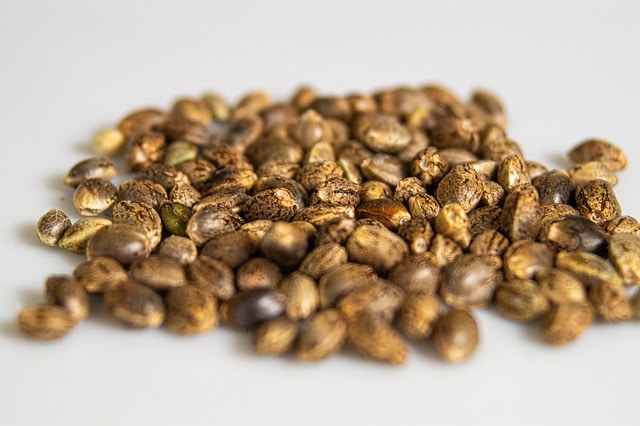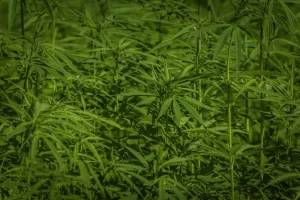Understanding Vertical Grow Systems
Vertical grow systems are a popular choice for indoor cannabis farming due to their space-saving nature. These systems involve growing plants upwards instead of outwards. By utilizing vertical space, growers can maximize their yield in a limited area. Some benefits of vertical grow systems include efficient use of light, easier plant maintenance, and better air circulation. With proper planning and setup, growers can create a productive indoor cannabis farm using vertical grow systems.
Benefits of Vertical Farming for Indoor Cannabis
Vertical farming for indoor cannabis cultivation offers several benefits:
- Maximizes Space: Vertical systems allow growers to make the most of limited indoor space, making it possible to grow more cannabis plants in a smaller area.
- Improved Light Distribution: By stacking plants vertically, each plant receives adequate light, promoting healthy growth and maximizing yield.
- Optimized Air Circulation: Vertical setups often come with integrated ventilation systems, ensuring proper airflow and reducing the risk of mold or pest infestations.
- Efficient Water Usage: Vertical farming systems are designed to efficiently water and nourish plants, minimizing waste and promoting sustainable growing practices.
- Easy Maintenance: With plants arranged vertically, it’s easier to access and care for each plant, simplifying tasks like pruning, harvesting, and monitoring plant health.
- Higher Yields: By utilizing vertical space effectively, indoor cannabis growers can achieve higher yields per square foot than traditional horizontal cultivation methods.
Types of Vertical Grow Systems
Vertical grow systems for indoor cannabis farming come in various types to suit different needs and spaces. Here are some common types you might encounter:
- Stacked Shelving Systems: Utilize shelves placed vertically one above the other to maximize space utilization.
- A-Frame Systems: Shaped like a letter ‘A’, these systems allow plants to grow on each side of the frame.
- Hydroponic Towers: These systems use a vertical tower design to grow plants without soil, using a nutrient-rich water solution.
- Rotating Vertical Gardens: These systems have rotating shelves that ensure all plants receive adequate light and space as they grow.
Each type has its own benefits and considerations, so it’s essential to choose the one that best fits your indoor cannabis farming goals.
Factors to Consider When Choosing a Vertical Grow System
When choosing a vertical grow system for your indoor cannabis farm, there are a few key factors to consider. Here are the most important points to keep in mind:
- Space: Vertical grow systems are designed to save space, so consider the dimensions of your grow area before selecting a system.
- Lighting: Ensure that the vertical grow system you choose can provide adequate light coverage for all your plants.
- Air Circulation: Good air circulation is crucial for healthy plant growth, so opt for a system that promotes airflow.
- Watering System: Some vertical grow systems come with built-in watering systems, which can make maintenance easier.
- Cost: Consider your budget when selecting a vertical grow system, as prices can vary depending on the system’s features and quality.
By taking these factors into account, you can choose the best vertical grow system for your indoor cannabis farming needs.
Setting Up a Vertical Grow System
Vertical grow systems are a smart choice for indoor cannabis farming. They maximize space by allowing plants to grow upwards, making efficient use of the area. Here are the key steps to set up a vertical grow system for your indoor cannabis farm:
- Choose a Suitable Location: Find a space with adequate room for your vertical system and access to water and electricity.
- Select the Right Equipment: Purchase vertical grow racks, LED grow lights, grow trays, and a reliable irrigation system.
- Prepare the Area: Set up the vertical racks according to the manufacturer’s instructions and ensure they are stable.
- Plant Your Cannabis: Use high-quality seeds or clones and plant them in the grow trays, making sure to provide proper spacing for growth.
- Maintain Proper Conditions: Monitor temperature, humidity levels, and nutrient levels to ensure healthy plant growth.
- Regular Monitoring: Check plants regularly for any signs of pests, diseases, or nutrient deficiencies. Adjust conditions as needed for optimal growth.
By following these steps, you can set up a functional vertical grow system for successful indoor cannabis farming.
Lighting Considerations for Vertical Grow Systems
When setting up your vertical grow system for indoor cannabis farming, lighting is a crucial factor to consider. Proper lighting is essential for the growth and development of your cannabis plants. Here are some key considerations for lighting in vertical grow systems:
- Light Spectrum: Choose a light source that provides a full spectrum of light to support all stages of plant growth, including vegetative and flowering phases.
- Light Intensity: Ensure that the light intensity is sufficient to reach all levels of your vertical grow system and provide adequate light for each plant.
- Light Duration: Set a consistent light cycle to mimic natural sunlight patterns and promote healthy growth in your cannabis plants.
By carefully selecting and implementing the right lighting for your vertical grow system, you can optimize the growing conditions for your indoor cannabis farm.
Nutrient and Water Management in Vertical Farming
In vertical farming, nutrient and water management are crucial for successful indoor cannabis cultivation. Here are some key points to consider:
- Nutrient Solution: Ensure your plants receive the necessary nutrients by using a balanced nutrient solution specifically formulated for cannabis growth.
- pH Levels: Monitor the pH levels of the nutrient solution to keep them within the optimal range for nutrient absorption.
- Watering Schedule: Establish a consistent watering schedule to prevent under or over-watering, which can affect plant health.
- Drainage: Proper drainage is essential to prevent waterlogged roots and ensure sufficient oxygen reaches the root system.
- Hydroponic Systems: Consider using hydroponic systems that efficiently deliver nutrients and water directly to the plants’ roots in a vertical setup.
By focusing on nutrient and water management, you can promote healthy plant growth and optimize the yield of your indoor cannabis farm.
Pest Control in Vertical Grow Systems
When dealing with pest control in vertical grow systems, prevention is key. Here are some simple tips to keep pests at bay:
- Regularly inspect your plants for any signs of pests like webs, eggs, or holes in the leaves.
- Introduce beneficial insects like ladybugs or predatory mites to naturally control pest populations.
- Use sticky traps or barriers to prevent pests from reaching your plants.
- Maintain proper ventilation and humidity levels to discourage pest infestations.
- Avoid over-watering your plants, as excess moisture can attract pests.
By staying proactive and implementing these pest control measures, you can help your indoor cannabis farm thrive.
Harvesting and Yield Optimization
To optimize your yield when harvesting cannabis in a vertical grow system, consider these tips:
- Harvest Timing: Harvest when the trichomes are milky or amber in color for the best potency.
- Proper Drying: Dry your cannabis buds slowly in a cool, dark, and well-ventilated space to preserve their flavor and potency.
- Curing: Allow your dried buds to cure in glass jars for a few weeks to enhance their taste and smoothness.
- Light Management: Ensure your plants receive adequate light during the flowering stage to promote bud development.
- Nutrient Balance: Maintain a balanced nutrient regimen to support healthy plant growth and high yields.
Tips for Successful Indoor Cannabis Farming with Vertical Grow Systems
Vertical grow systems are an efficient way to grow cannabis indoors. Here are some tips for successful indoor cannabis farming with vertical grow systems:
- Ensure proper lighting: Cannabis plants need sufficient light to grow. Consider using LED grow lights that can be adjusted to different heights.
- Maintain proper airflow: Good air circulation is crucial for healthy plant growth. Use fans to keep the air moving within the grow space.
- Monitor humidity levels: Cannabis plants thrive in a humidity range of 40-70%. Use a hygrometer to keep track of humidity levels and adjust accordingly.
- Water plants appropriately: Overwatering can lead to root rot, while underwatering can cause nutrient deficiencies. Find the right balance and water your plants accordingly.
- Regularly inspect plants: Check your plants for pests, mold, or any other signs of distress. Early detection can help prevent issues from spreading.
- Stay organized: Keep track of feeding schedules, plant growth, and any adjustments made to the grow system. Documentation can help you identify patterns and improve your farming techniques.
By following these tips, you can maximize the efficiency of your vertical grow system and enjoy a successful indoor cannabis farming experience.













